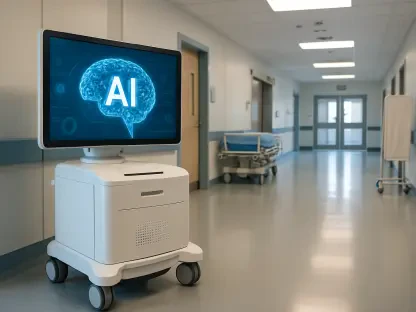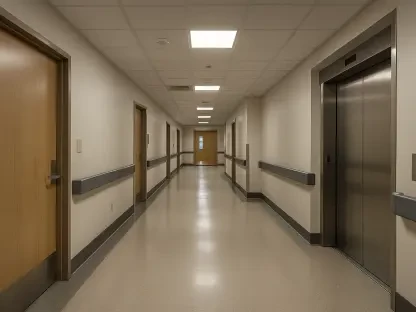In the realm of education, few topics ignite as much passion and concern as the identification of dyslexia in children, a process that holds the promise of tailored support but often falls short without proper follow-through, leaving many families and educators frustrated. For countless families and educators, a diagnosis seems like the key to unlocking resources and strategies that can transform a child’s academic journey. However, when that label is applied without a clear plan for intervention, it risks becoming an empty gesture, leaving students stranded in their struggles. This article delves into the intricate challenges surrounding dyslexia diagnosis, examining why screening alone isn’t enough and why a more comprehensive, action-oriented approach is essential. The focus rests on balancing the need for early identification with the practical support required to make a real difference, ensuring that children aren’t just categorized but genuinely helped.
Examining the Challenges of Early Identification
Screening Without Support
The push for universal dyslexia screening has gained traction in recent years, fueled by advocates like celebrity chef Jamie Oliver, who argue that early detection can change lives by addressing reading difficulties before they spiral. Yet, this well-meaning drive often collides with a harsh reality: many schools lack the resources to act on screening results. When children are identified as potentially dyslexic without subsequent access to specialized teaching or support programs, the diagnosis can raise hopes only to dash them. This gap between identification and action breeds frustration among parents and teachers alike, who may feel powerless to help despite having a label in hand. The risk here is that screening becomes a symbolic step rather than a practical one, highlighting the need for systemic readiness to ensure that every diagnosis is matched with meaningful intervention.
Moreover, the emotional toll of unsupported screening cannot be overlooked. Families often invest significant time and energy into the process, expecting that a diagnosis will open doors to solutions, only to find themselves navigating a maze of limited funding and overstretched educational systems. Teachers, too, may feel burdened by the responsibility of identifying struggles without the tools or training to address them effectively. This disconnect can erode trust in educational institutions, as the promise of early intervention turns into a waiting game with no clear end. Addressing this issue requires not just more screening, but a commitment to building robust support networks that turn labels into actionable plans, ensuring that no child is left behind after being flagged for potential dyslexia.
Limitations of Current Tools
Turning to the tools used for dyslexia screening, a critical flaw emerges in their often narrow scope, as many assessments—whether based on teacher observations or digital platforms—capture only a fragment of a child’s learning profile. These methods may flag reading difficulties, but they frequently fail to account for the complexity of literacy challenges, which can stem from a variety of sources beyond dyslexia. Conditions such as developmental language disorders or attention deficit hyperactivity disorder (ADHD) often overlap with dyslexia, creating a tangled web of needs that a single-focused test might miss. This limited approach risks misdiagnosis or incomplete support, leaving underlying issues unaddressed and children without the full range of help they require to thrive academically.
Additionally, the inaccuracy of many screening tools compounds the problem, as they may not reliably distinguish between temporary struggles and persistent conditions like dyslexia. A snapshot assessment can label a child prematurely, potentially leading to unnecessary stress or stigma without clarifying the root of their difficulties. Educators and specialists must then spend valuable time unraveling these results, diverting attention from intervention to clarification. The danger lies in overemphasizing dyslexia at the expense of a broader understanding, which could exclude other critical factors affecting learning. A more nuanced evaluation system is needed, one that looks beyond surface-level indicators to ensure that every aspect of a child’s challenges is considered before any conclusions are drawn.
Toward a Better Framework for Support
A Needs-Based, Multi-Phase Process
Shifting away from the rush to label, experts advocate for a needs-based, multi-phase approach that prioritizes early intervention over immediate diagnosis, especially for younger children who are still developing their skills. This method suggests providing extra support to any child showing signs of reading struggles without attaching a specific label right away. By focusing on practical help first—such as targeted reading programs or one-on-one assistance—educators can address issues in real time while avoiding the risk of categorizing a child too soon. Only if difficulties persist over time would a formal assessment for dyslexia be considered, ensuring that the label is both accurate and relevant to the child’s ongoing needs.
This staged process offers a significant advantage in preventing the pitfalls of over-diagnosis, which can sometimes burden children with a label that doesn’t fully fit their situation or lead to assumptions about their capabilities. It also ensures that resources are allocated efficiently, reaching all students who struggle, not just those who meet specific diagnostic criteria early on. Such an approach fosters inclusivity in education, recognizing that literacy challenges vary widely and may not always require a formal tag to be addressed effectively. By delaying definitive labeling until patterns are clear, schools can build a more flexible and responsive system that adapts to each child’s evolving learning journey, ultimately prioritizing progress over paperwork.
Holistic Understanding of the Child
Beyond a phased approach, there’s a growing emphasis on understanding the whole child through comprehensive tools that assess far more than just reading ability, capturing a broader spectrum of developmental factors. Broad-based questionnaires, for instance, can evaluate sensory responses, motor skills, and visual processing, creating a detailed picture of a child’s learning profile. This holistic method helps uncover overlapping conditions—such as ADHD or language disorders—that might contribute to literacy struggles alongside or instead of dyslexia. With this fuller view, educators can design interventions that target specific needs rather than applying a one-size-fits-all solution, ensuring that support is both precise and effective.
Equally important is the focus on strengths within this comprehensive assessment, as recognizing what a child excels at can be just as crucial as identifying their challenges. Tailored support plans built from such evaluations can leverage these strengths to bolster weaker areas, fostering confidence and engagement in learning. This approach also helps prevent educational gaps from widening by addressing issues proactively before they become entrenched. By moving beyond a narrow dyslexia lens, schools can create a more dynamic support system that adapts to the multifaceted nature of learning difficulties, ensuring that interventions are as unique as the children receiving them. This shift in perspective marks a critical step toward truly personalized education.
Building Systemic Support
The Role of Specialists in Schools
To translate diagnosis into tangible outcomes, schools must prioritize the presence of in-house specialists trained to conduct in-depth assessments and craft individualized support plans for students with dyslexia. These professionals bring expertise in navigating the complexities of learning differences, going beyond surface-level screening to uncover the root causes of a child’s struggles. Their ability to design targeted interventions—whether through specialized reading programs or accommodations like extended time on tasks—ensures that a diagnosis becomes a roadmap to progress rather than a static label. Without such expertise on hand, schools risk leaving students and teachers without the guidance needed to address identified needs effectively.
Furthermore, the value of specialists extends into long-term planning, as they can monitor a child’s development over time and adjust interventions as circumstances change. This continuity is vital for students with dyslexia, whose challenges may evolve as they progress through different academic stages. Specialists also serve as a bridge between schools and families, offering clarity on what a diagnosis means and how it can be managed day to day. Investing in these trained professionals transforms educational environments into proactive spaces where dyslexia is not just named but actively addressed, laying the groundwork for sustained academic and personal growth well into adulthood.
Ensuring Lasting Impact
Reflecting on past efforts, it became evident that many initiatives to diagnose dyslexia stumbled when resources for follow-up support were scarce, leaving children with labels but little else. Historical data showed that without systemic commitment, screening often led to unmet expectations, as schools grappled with budget constraints and limited training. Looking back, those gaps highlighted a critical lesson: identification without action risked undermining trust in educational systems, as families and educators felt let down by promises of help that never materialized. The focus then was often too narrow, missing the broader context of a child’s needs.
Moving forward, the path to meaningful change lies in embedding robust support structures within schools, ensuring that every diagnosis triggers a clear, funded plan of action. Policymakers and educators must collaborate to allocate resources for specialist training and intervention programs, while also adopting holistic assessment tools that capture the full scope of learning challenges. By learning from earlier shortcomings, the educational landscape can shift toward a future where a dyslexia diagnosis is not an endpoint but a starting line for real, transformative support that lasts a lifetime.









